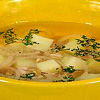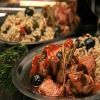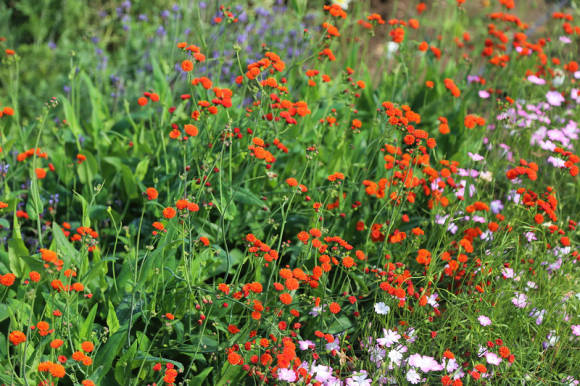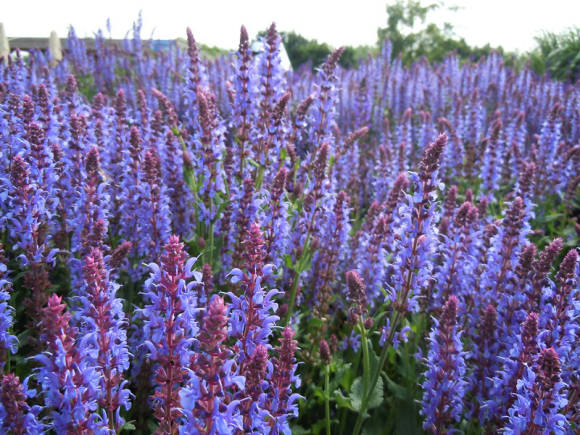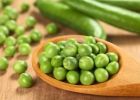 |
If in our country under the name "plantain" is traditionally used plantain large (Plantago major), then the European neighbors associate a different species with this name - the lanceolate plantain (Plantago lanceolata). It also grows in our country, and herbalists on traditional medicine will probably find a little information about it. But purposeful scientific medical research in the USSR, and now in Russia, was practically not carried out on it. Why, if there is already one plantain that grows well and has everything well studied?
Meanwhile, the plant is very interesting. To begin with, the VVD chooses the herb of the year every year. This year, 2014, this plant was the lanceolate plantain. By the way, next year there will be St. John's wort. (Hypericum perforatum).
Plantain lanceolate (Plantago lanceolata L.) belongs to the plantain family. Homeland - Europe, North Africa, Front, Central and North Asia. Thanks to anthropogenic influence, it has spread across the globe. Occurs in dry meadows, fields, fallow lands, roadsides. Prefers dry and calcium-poor soils. Generic name Plantago comes from Latin planta - a footprint, a sole, because the leaves of a large plantain resemble a footprint. The specific name indicates the lanceolate shape of the leaves. Translated from German, the plant sounds like "road invader", that is, it has the same meaning as in Russian, and well reflects the spread of the plantain. Lanceolate plantain is a perennial plant with a height of 5 to 50 cm. Lanceolate leaves are collected in a socket. Leaves are narrow-lanceolate, with well-defined 3-5 parallel veins. Leaves can reach a length of 30 cm and a width of up to 4 cm. The stem is not formed. The fruit is a two-chambered capsule with two smooth shiny elliptical seeds. The seeds have a yellow-brown to dark brown shell, with a black eye. In Europe and Asia, this plantain grows in meadows and as a ruderal plant. Permeable, slightly acidic humus soils are suitable for its cultivation. Heavy soils and lowlands are not suitable. Varieties, as such, are practically absent, despite the prevalence of the culture in many European countries, and therefore local populations characterized by a large leaf mass are grown. The Czech Republic has its own variety, Libor. Plantain lanceolate can be grown both in annual and biennial crops (sowing August-September). Row spacings - 25-45 cm. If the aisles are wider, then inter-row cultivation can be done, if narrow, then the plants quickly close in rows and suppress weeds. The seeding depth is 1.5-2 cm. It is advisable to slightly compact the soil after sowing. For sowing, a soil temperature of + 10 + 16 ° C is desirable, that is, spring sowing should not be entirely early. Fertilization depends on conditions and yield. Nitrogen fertilizers are applied fractionally: most of them during sowing, then feeding of vegetative plants and the second after the first cut. Phosphorus and potassium are applied before sowing as the main fertilizer. Organic fertilizers are best applied under the predecessor. Diseases and pests: anthracnose (Phyllosticta plantaginis), rust (Puccinia cynodontis), burns (Colletotrichum sp.). Since the Stone Age, this plant has been accompanying cereal crops from Europe to Asia. The first information about the use as a medicinal plant came from Assyria. Its medicines are described in books on herbal medicine of all times and many peoples: Dioscorides mentions it as a remedy for pain and wounds, Pliny the Elder (23-79) recommended juice as a remedy for snake and scorpion bites, Hildegard Bingensky (1098-1179) .) recommended it as an antidote to love potion. It is also mentioned in the works of L. Fuchs. In the European Pharmacopoeia (Ph. Eur.6) leaves are recommended for use Plantaginis lanceolatae folium... We are talking about dried and crushed leaves with a minimum content of the sum of ortho-dihydroxycinnamic acid derivatives of at least 1.5%, designated as acteoside. DAB 2008 no longer includes an article on plantain lanceolate, since there is no need to duplicate the European Pharmacopoeia. Earlier editions contained two monographs per leaf and herb. The chemical composition of the plant resembles that of the large plantain. The leaves contain iridoids (2-3%) - mainly aucubin, catalpol, a little asperuloside, mucus 2-6% (glucomanans, arabinogalactans, rhamnogalactourans), as well as the flavonoids luteolin and apigenin. The leaves contain such medically interesting compounds as derivatives of ortho-dihydroxycinnamic acid - 3-8% (according to the European Pharmacopoeia, they should be at least 1.5%), designated under the general name acteoside. The content of tannins is about 6%, silicic acid is about 1%. Further, phenolcarboxylic acids, a small amount of saponins and minerals with a large proportion of zinc and potassium were found. The raw material has a softening and enveloping effect due to the content of mucus, tannins have an anti-inflammatory and antimicrobial effect (iridoids), in particular, aucubin has a very wide spectrum of antimicrobial action. Plantain lanceolate is used as a remedy for colds of the respiratory tract and inflammation in the mouth and throat. Used to reduce irritation in catarrh of the upper respiratory tract, inflammation of the mucous membrane of the mouth and pharynx (in the form of tea and other liquid extracts), and externally - with inflammation of the skin. Clinical confirmation of efficacy has been obtained for the named application. The raw materials are on sale in the form of teas, sachets, cough suppressants. Plantain extracts and pressed juice are applied in the form of drops and canned juice. In addition, syrup can be found in pharmacies. The action of the drugs is based primarily on iridoids and mucous substances. In folk medicine, it is used both internally and externally. Inside, the infusion is used, first of all, for diseases of the upper respiratory tract and lungs. Externally used as a wound healing agent, applying steamed or washed fresh leaves on the damaged surface. Professor I. Meyer, well-known in Germany, from the Institute for the History of Medicine at the University of Würzburg, believes that plantain should be infused only in cold water. For this, 2 tablespoons of raw materials are poured with 2 cups of cold boiled water. Insist for about 2 hours, then filter, heat to a comfortable temperature, add honey if desired and thus obtain an infusion. It is very important to drink it in small sips, swallowing it too slowly so that the infusion is in contact with the mucous membranes of the mouth and pharynx for as long as possible. This plant can be successfully used in cooking almost all season. Its taste is reminiscent of fresh mushrooms. Young leaves can be harvested from May to July; later, the leaves are harvested only near the center of the rosette. Chopped fresh leaves are added to salads, and boiled in boiling water - to omelets and scrambled eggs. Shoots with buds taste like champignons and can be used for julienne, soufflé, salad. See Candied Plantain Blossoms and Leaves, Apricot Cream Dessert with Plantain and Budra, Tomato Soup with Wild Herbs, Julienne with Champignons and Plantain, Plantain Syrup
Botanical portrait
History of medicinal use

Chemical composition
Medicinal use
Plantain lanceolate on the table

